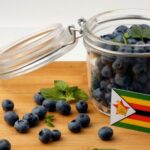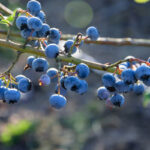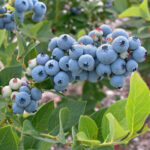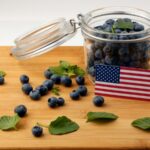Q&A: The guidelines of the new president of Proarándanos in Peru

Last week, the Association of Producers and Exporters of Blueberries of Peru (Proarándanos) held elections to select the new Board of Directors for the 2024-2026 term.
Miguel Bentín, a representative of Family Farms Perú, was appointed as the new president of Proarándanos. He discussed his management guidelines and industry outlook with FreshFruitPortal.com.
In your opinion, what are the main challenges that the industry is facing?
My vision is to continue the current management of Proarándanos, focusing on the institution's five key areas. One of them is market access, both in opening new destinations and improving markets where we are already established. There are still challenges to enter some markets, which are important for us and are being managed. Therefore, it is necessary to maintain a close relationship and collaboration with Senasa, which is essential to achieve these objectives.
Another important aspect is promoting our crop globally and aligning with other producing regions. We also focus on communication and maintaining the reputation of the association, the guild, and the industry.
The industry is important because it generates employment and ensures and promotes good working conditions.
We are part of the Association of Agricultural Producers Union of Peru (AGAP), which focuses on the transversal management of the industry, coordinates with the public sector, and also seeks to preserve and take care of the legal frameworks to ensure the conditions for foreign trade.
Internally, the exchange of quality and timely information adds value to members, enabling Proarándanos to be a valuable tool for farmers in making informed decisions.
What type of leadership will you have in Proarándanos?
I was president of Proarándanos 10 years ago when it was first formed, and the objective is to have a highly collaborative environment among the associates. It is important to have an openness to transfer know-how and to be able to share experiences so that, in the back and forth, we can all raise the general standard. I think we are a well-knit guild and there is a lot of transparency.
What strategies do you intend to implement to continue strengthening exports?
We continue to promote the same strengths that we have as a country. At the union level, it is a bit difficult to implement purely commercial strategies.
Despite the disruptions in 2023, we believe we can still position ourselves as a consistent supplier. And on that basis, always promote product improvement.
We aim to provide tools that enable companies to achieve the best possible commercial performance.
From your point of view, what comes ahead for the industry concerning new varieties?
With this climatic event (El Niño phenomenon last year) we realized that we won't always enjoy the same conditions and we've seen that there are genetics that have a different tolerance to these events. Some varieties have shown strong resilience to such events, while others have not. It is up to each producer to evaluate the risk of keeping or changing them.
Essentially, genetics is critical for the success of a blueberry business, so evolution will be fundamental. Some varieties will become obsolete and we are already seeing that.
In some markets, consumers are beginning to recognize both labels and varieties by their consistency. For example, the English market has been placing the name of the variety on its packaging for many years.
Growth dynamics will most likely not be by expansion but by substitution in the coming years. One of the biggest challenges to overcome at the global industry level is quality.
Blueberries are an expensive product that has a short shelf life and this affects the industry as a whole because people are reluctant to buy the product again, so we have to improve the quality so that the consumer experience is consistently good.
How do you seek to keep prices profitable despite volume?
Promotion is key, along with securing the conditions to make us more competitive, regardless of market conditions; it is key not only for success but for survival.
Blueberries are a product of rising demand, in the industry there is no general oversupply, but there are events of oversupply. For example, in October the supply is huge and that can be an oversupply event that affects demand and prices fall.
The idea is that Peru can have longer and longer windows so that volumes can remain with good quality, but with slightly flatter curves.
The strategy to guarantee better prices in the future with more volume is expansion, added to the fact that demand in current markets continues to develop and, like Peru, to be able to access as many markets as possible.
Our goal is to have access to 100% of the potential markets in the world, to expand supply distribution, reducing the risk of concentrating volume in markets that are already mature. We cannot send 100% of our product to a single market, so, as it is distributed, we develop what initially may be supply outlet valves, but at the same time, we begin to build new markets.
Which market are you looking to develop?
Thailand, Japan, and South Korea are important markets with significant potential that we have yet to access.
How is the current season projected?
This year we had late pruning, later than usual, due to the extension of the previous season and probably some specific strategy of some of the companies.
To date, production is lower compared to the previous year and to the previous year as well. This is due to late pruning and slightly cooler temperatures.
We are approximately 33% below the previous season, with 15 million kilos, which is very little. We have a current projection that is around 290,000 tons.
In the next four to five weeks, we expect to have more certainty and will update projections accordingly to fine-tune our estimates as much as possible.
We have a certain degree of uncertainty towards the last quarter of the year, where most of the volume is concentrated. The quality of the fruit is particularly good so, in terms of quality, a very good season is foreseen.
What message are you sending to the industry?
The industry must remain united in its efforts, working with global institutions to promote demand and advance the crop together.














































